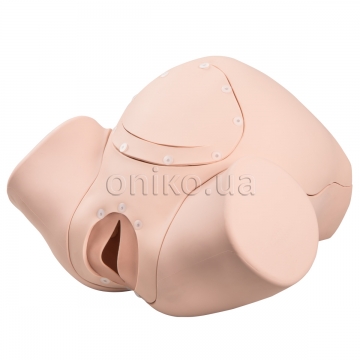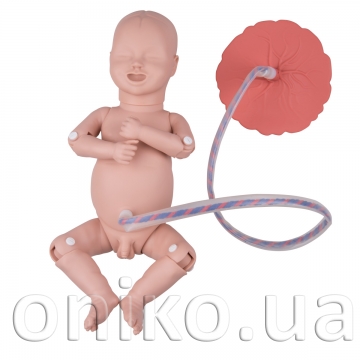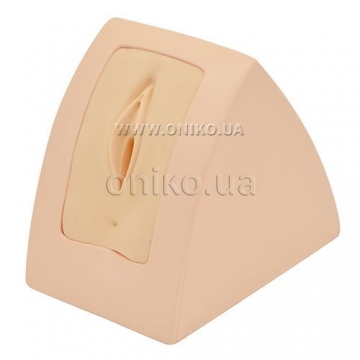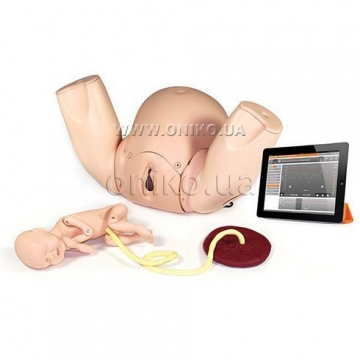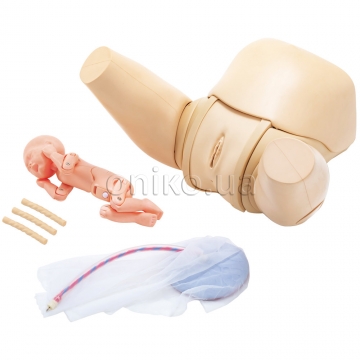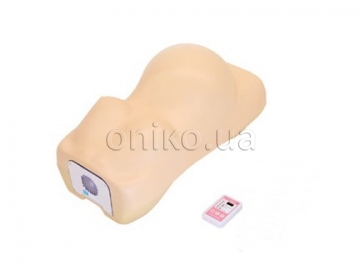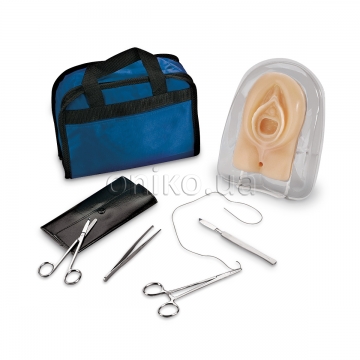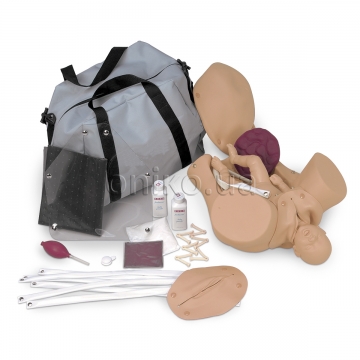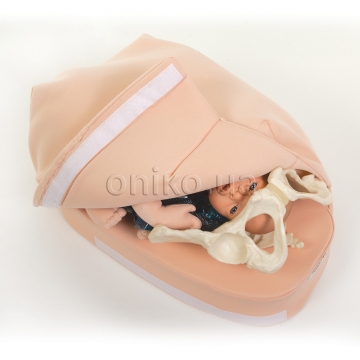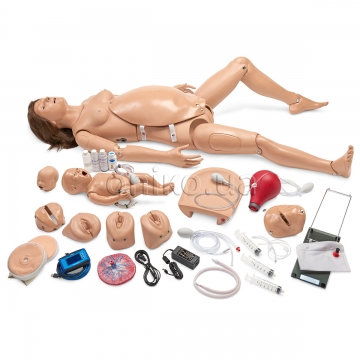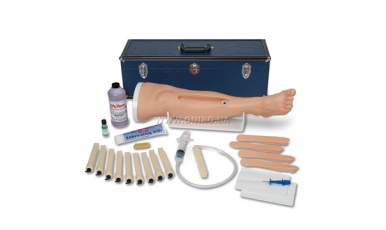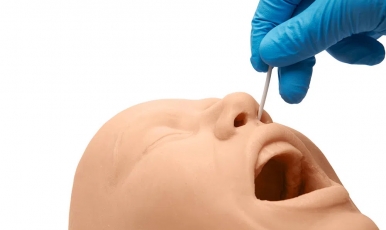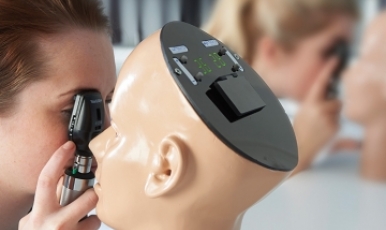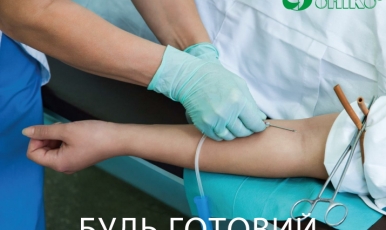Birthing Simulator Basic
This birthing simulator has been developed for the skill training in normal deliveries, in complicated
deliveries and in obstetric emergencies. Obstetric simulation has proven successful to enhance the
training of delivery skills, following of protocols and reaction in emergency situation.
Birthing complications are in general less likely when an abnormal fetal position or presentation can be
detected before the labor process starts. When a fetus doesn’t present in a normal position (facing
backwards, presenting head first), the correct measures must be applied to assist a complicated delivery
with manual maneuvers. Furthermore, medical staff must be trained on when and how to apply obstetric
emergency interventions (like a cesarean section).
Features:
∙ Fully articulating fetus with open mouth, tiltable head, shoulder blade, and anatomical correct
fontanelles
∙ Life-size adult female lower torso, anatomically correct landmarks like pelvis, pelvic cavity, and spine
∙ Manual birthing system to control rotation and speed of fetus delivery
∙ Easy to change position of fetus during birthing process including descend, flexion, extension, internal
and external rotation, and restitution
∙ Easy change-out of parts
∙ Anti-slip base and handles for extra support on tables
∙ All consumables and replacement parts are available
Skills and techniques:
∙ Normal vaginal delivery
∙ Normal delivery of umbilical cord and placenta
∙ Palpation and assessment of fetal position and presentation
∙ Diagnosis of all normal and abnormal fetal positions and presentations (like face, neck, or brow) to
represent routine and difficult deliveries
∙ Shoulder dystocia demonstration and management
∙ Breech deliveries (including complete, footling or incomplete, and frank breech presentation)
∙ Palpation of fetal fontanelles features
∙ Complete and incomplete placenta birth
∙ Demonstration of placenta previa: total, partial, and marginal
∙ Prolapse of umbilical cord
∙ Nuchal umbilical cord
∙ Cesarean delivery through pre-cut incision
∙ Clamping and cutting of umbilical cord
∙ Simulated suctioning of baby’s mouth and nose
∙ Pinard’s maneuver
∙ Mauriceu-Smellie-Veit maneuver
∙ Prague maneuver
∙ Woods maneuver
∙ Rubin

